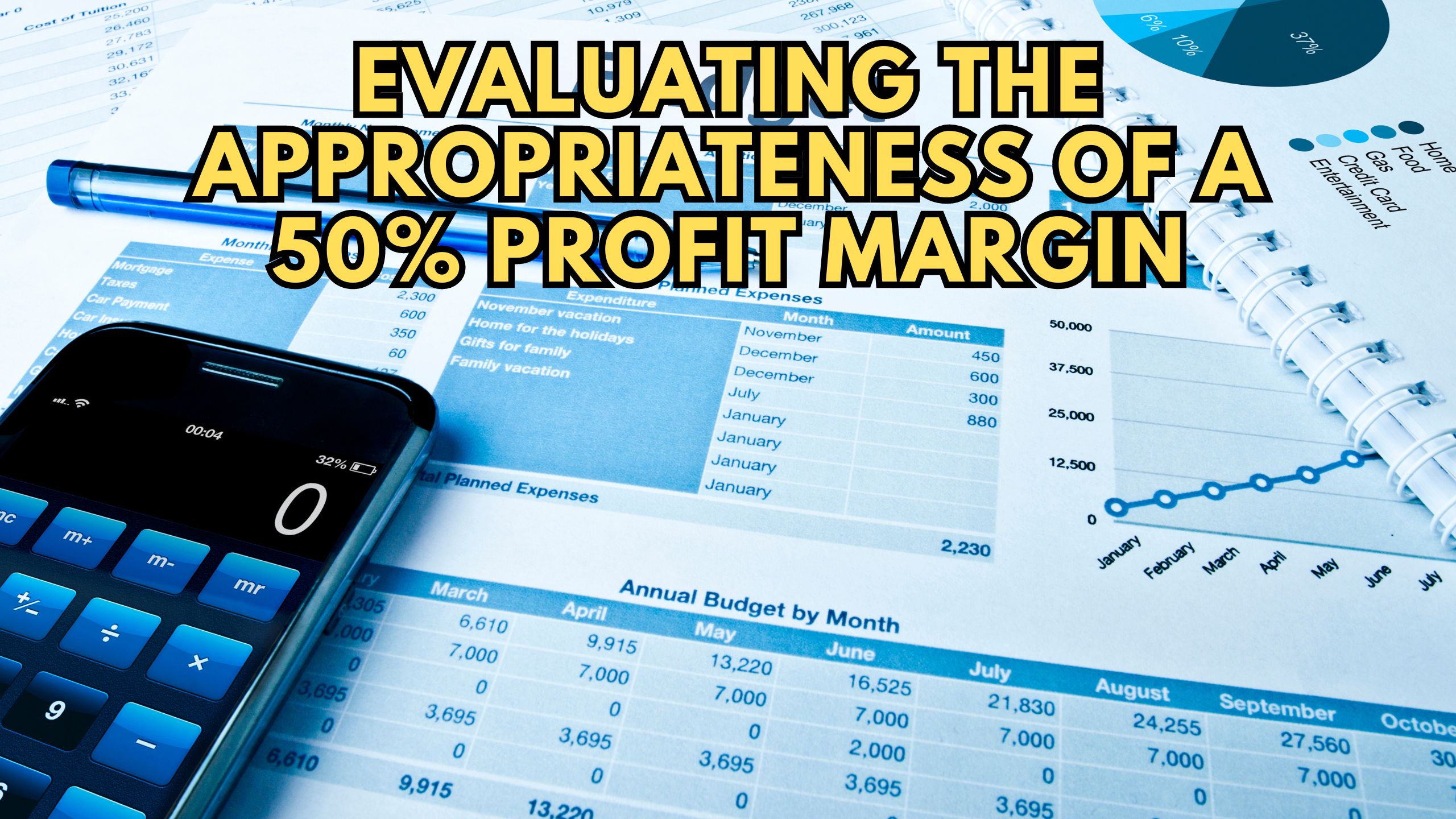Evaluating the Appropriateness of a 50% Profit Margin
- Expense Management Software Credit Cards Investing Business Solutions


Evaluating the Appropriateness of a 50% Profit Margin
In the world of business, determining an appropriate profit margin is a critical aspect of financial planning and sustainability. This blog thoroughly explores the concept of a 50% profit margin, addressing the common query: Is a 50% profit margin too high?
Understanding Profit Margin
What is a Profit Margin?
Profit margin is a key financial metric that represents the percentage of revenue that exceeds the cost of goods sold. A 50% profit margin implies that half of the revenue generated contributes to profits after covering the associated costs.
Factors Influencing Profit Margins
Several factors, including industry norms, business size, and market dynamics, influence what constitutes an appropriate profit margin. It’s essential to evaluate these factors to determine the suitability of a specific profit margin for a given business.
Significance of a 50% Profit Margin
1. Profitability and Sustainability
A 50% profit margin indicates a high level of profitability, providing businesses with financial stability and the capacity to reinvest in growth initiatives. However, the appropriateness depends on the industry and competitive landscape.
2. Investor Attractiveness
For investors, a 50% profit margin may signal a lucrative investment opportunity. Businesses with such margins are often viewed as financially robust and capable of delivering strong returns, making them appealing to potential investors.
3. Risk Management
While a high profit margin can be advantageous, it may also indicate a potential risk. Overreliance on high margins without a sustainable business model could lead to challenges during economic downturns or changes in market conditions.
4. Competitive Pricing
A 50% profit margin allows businesses to adopt competitive pricing strategies, offering value to customers while maintaining healthy profitability. This approach can contribute to market dominance and customer loyalty.
5. Operational Efficiency
Achieving a 50% profit margin often requires operational efficiency and effective cost management. Businesses with streamlined processes and minimized waste can sustain higher profit margins without compromising quality.
Relevant SaaS Products Enhancing Profitability
1. ProfitWell – Subscription Metrics and Profitability Insights
ProfitWell provides valuable insights into subscription metrics, helping businesses understand and optimize their profitability. Its analytics tools empower users to make data-driven decisions for sustainable growth.
2. ChartMogul – Subscription Analytics and Revenue Recognition
ChartMogul focuses on subscription analytics and revenue recognition. By leveraging its features, businesses can gain a deeper understanding of their revenue streams, facilitating strategic decisions for improved profitability.
3. Maxio – Subscription Billing and Revenue Management
Maxio specializes in subscription billing and revenue management. It helps businesses streamline financial processes, ensuring accurate billing and revenue recognition, ultimately contributing to enhanced profitability.
4. Chargebee – Subscription Management and Billing Automation
Chargebee offers subscription management and billing automation services. Its solutions assist businesses in optimizing their subscription models, reducing churn, and maximizing profitability.
5. Causal – Financial Modeling for Predicting Profitability
Causal focuses on financial modeling, allowing businesses to predict profitability based on various scenarios. This tool aids in strategic planning, helping businesses evaluate the impact of different factors on their profit margins.
Conclusion
In conclusion, the appropriateness of a 50% profit margin depends on various factors unique to each business. While it can signify financial strength and attractiveness to investors, businesses must carefully assess industry standards, market conditions, and operational efficiency. Striking the right balance ensures sustainable profitability and long-term success.
Optimize Your SaaS Stack with Subscribed.fyi
Unlock exclusive deals and streamline your SaaS subscriptions with Subscribed.fyi. Sign up for free to access member-only deals, saving over $100,000 annually on 100+ SaaS tools. Manage all your subscriptions effortlessly, compare tools, and make informed decisions with Subscribed.fyi.
Relevant Links:





